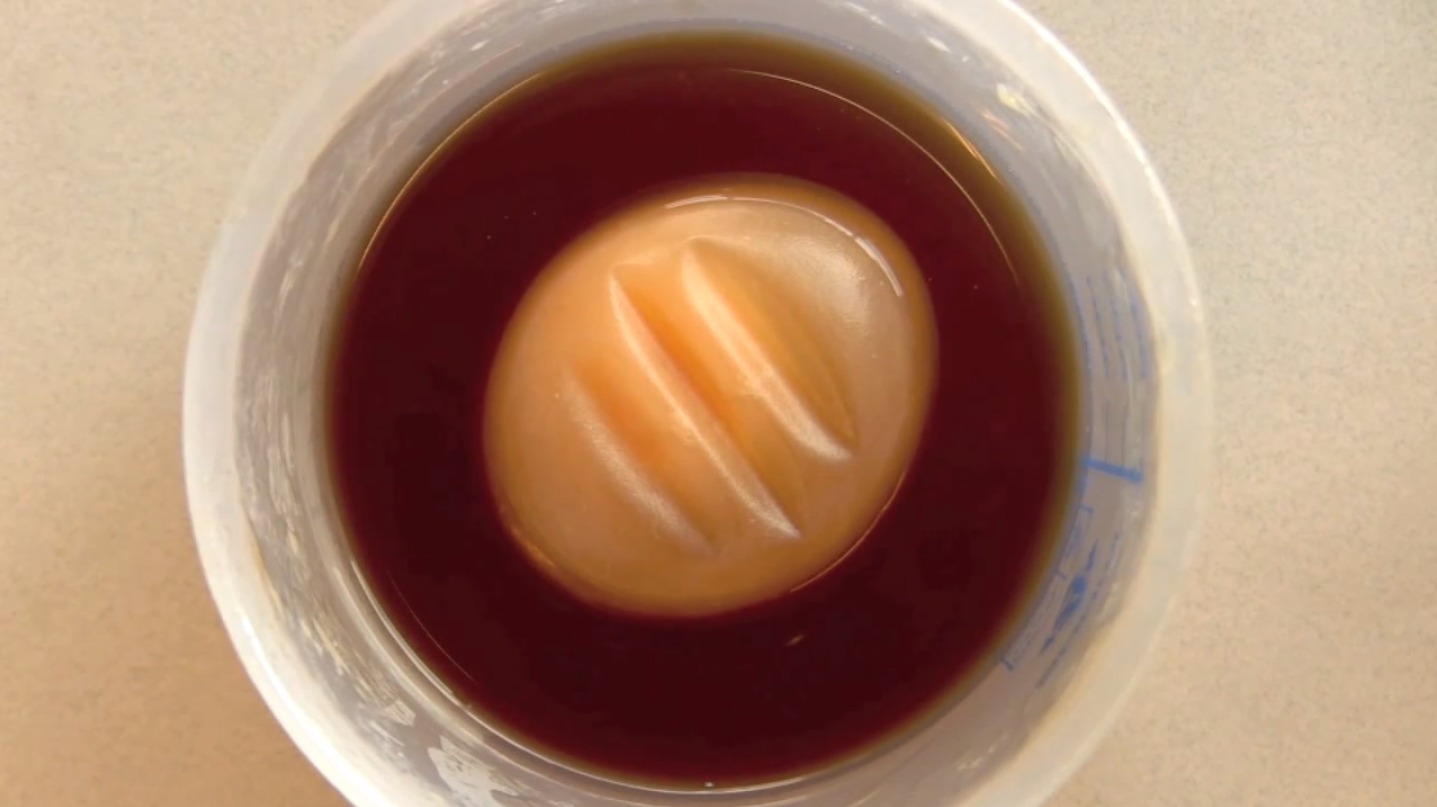Do osmosis with food
Compare osmosis in food by soaking potato slices or grapes in fresh water and salt or sugar solutions, measuring size, weight, and texture changes.



Step-by-step guide to do osmosis with food
Eggs and Osmosis - A Fun Science Experiment
Step 1
Wash your hands with soap and water so your experiment stays clean.
Step 2
Label six bowls Potato-Fresh; Potato-Salt; Potato-Sugar; Grape-Fresh; Grape-Salt; Grape-Sugar.
Step 3
Pour 1/2 cup water into each of the six labeled bowls.
Step 4
Make the salt solution by adding 2 tablespoons of salt to each salt bowl and stirring until the salt dissolves.
Step 5
Make the sugar solution by adding 2 tablespoons of sugar to each sugar bowl and stirring until the sugar dissolves.
Step 6
Ask an adult to help you cut one medium potato into six even slices about 1/4 inch thick.
Step 7
Pick six similar-sized grapes and pat them dry on a paper towel.
Step 8
Weigh each potato slice and each grape on the kitchen scale and write the starting weight next to its matching bowl.
Step 9
Measure the length or diameter of each potato slice and each grape with the ruler and write the starting size next to its bowl.
Step 10
Carefully place one potato slice into each potato-labeled bowl.
Step 11
Carefully place one grape into each grape-labeled bowl.
Step 12
Start a timer and leave all six bowls undisturbed for 1 hour so osmosis can happen.
Step 13
After 1 hour, remove each sample from its bowl and place it on a paper towel.
Step 14
Gently blot each sample dry and then weigh and measure each one again and write down the final numbers and a short note about any texture change.
Step 15
Share your finished creation and what you discovered about osmosis on DIY.org.
Final steps
You're almost there! Complete all the steps, bring your creation to life, post it, and conquer the challenge!


Help!?
What can we use if we don't have a kitchen scale or the exact bowls and tools listed?
If you don't have a kitchen scale, make a simple balance using a ruler and two identical small containers or a coat hanger and cups to compare masses before the 'Weigh each potato slice and each grape on the kitchen scale' step, and use any clean small bowls, a ruler, timer, and paper towel in place of the exact items named.
What should we do if the salt or sugar doesn't dissolve well or the results look inconsistent?
Warm the 1/2 cup water slightly and stir the salt or sugar until fully dissolved when making the solutions, make sure slices and grapes are similar size in step 'Ask an adult to help you cut...' and gently blot each sample dry the same way in the 'Gently blot each sample dry' step to avoid weighing extra surface water.
How can I change the activity for younger kids or make it more challenging for older children?
For preschoolers, have an adult do the cutting and weighing and let the child place samples, start the timer, and observe textures in the 'Start a timer and leave all six bowls undisturbed for 1 hour' step, while older kids can record precise measurements, calculate percent change, and test extra concentrations or time points.
What are simple ways to extend or personalize the experiment after finishing the basic procedure?
Extend the activity by adding more bowls with different salt or sugar amounts (for example 1 tablespoon and 3 tablespoons) and extra check times like 30 minutes and 2 hours, photograph each sample on the paper towel after the 'After 1 hour, remove each sample' step, and graph weight and size changes before sharing your results on DIY.org.
Watch videos on how to do osmosis with food
Potato experiment | Osmosis | Biology
Facts about osmosis and diffusion
⚖️ A kitchen scale that measures grams can reveal tiny weight changes during osmosis, so small differences are easy to track at home.
🍇 Grapes put into salty water often shrink and wrinkle because salt draws water out of their cells (a process called plasmolysis).
🧪 Osmosis moves water through a semipermeable membrane from areas of low solute concentration to high solute concentration — it's why cells swell or shrink.
🥔 Potato slices can change firmness and size after soaking; kids often notice differences in texture in as little as 30 minutes to a few hours.
💧 Sugar and salt solutions can cause opposite effects depending on concentration — sometimes sugar makes fruit swell while salt usually pulls water out.
How do I compare osmosis in potato slices and grapes at home?
What materials do I need to compare osmosis in food using potato slices or grapes?
What ages is this osmosis-in-food experiment suitable for?
What are the benefits, safety tips, and variations for comparing osmosis in food?


One subscription, many ways to play and learn.
Only $6.99 after trial. No credit card required



